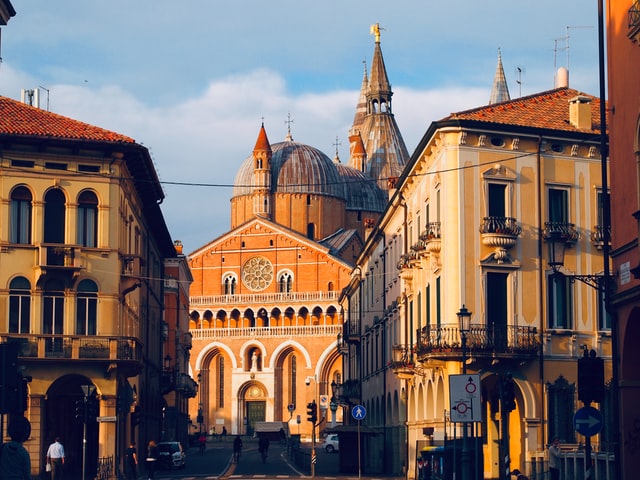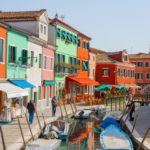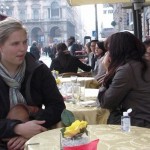A Pilgrimage to Padua Italy

Growing up in an Italian household, I heard the phrase “St. Anthony will help you find it!” so many times that they were ingrained in me pretty much from birth. No matter the item, no matter the value, my mother always had utmost trust and belief that if we prayed to the Saint of Lost Things, we’d find whatever we had misplaced. More often than not, she was right. My mom has always had a close relationship with St. Anthony, the patron Saint of Padova (Padua in English).
A few years ago, on a return trip to our native Calabria, my mom, sister and I decided to take a train ride to Padova to visit the Shrine of St. Anthony. Calabria is as far south as you can get in Italy, besides Sicily. The Veneto, the region in which Padova is located, is pretty much at the opposite end of Italy. It was August and it was hot. Very, very hot.
The very long, hot, uncomfortable train ride was all but forgotten once we reached the beautiful but untouristed city of Padua. There’s a sense of classiness to this city. The people are beautifully dressed, the dogs are on leashes and drivers appear respectful of traffic lights! Our first stop, and reason for the trip, was a visit to the Chapel of St. Anthony, an immense, brick building, overwhelmingly beautiful. The inside is massive and adorned with art, religious statues and relics of St. Anthony. A sense of calm immediately overtook us. I knew being there meant a lot to my mother, especially as she lost my dad just the year before. Folks from all walks of life are drawn to this church by their strong devotion to the Saint.
This trip–dare I say, pilgrimage–was very moving for us all. It’s hard not to be touched when surrounded by such artistic beauty, as well as all the notes on the walls left behind by pilgrims who wholeheartedly believe their prayers were answered by the Saint. It restored not only my religious faith, but also my faith in humankind.
Whether one is religious or not is almost inconsequential once one takes a view of both the outside and inside of this beautiful chapel. The outside was initially built as a small, single construction, but extensive additions and renovations over the centuries reflect Romanesque, Gothic, Baroque and Byzantine influences. Architecture aficionados and novices alike will appreciate the beauty of the outside. Upon entering, you’ll notice that it’s much like entering a museum. Beautiful frescoes, statues and figurines adorn the inside. Most impressive is the statue of the Madonna and Child, sculpted by Donatello.
Despite being the patron Saint of Padua, St. Anthony was actually from Portugal, and born in 1195. His birth name was Ferdinand and he was born to a well-off family who had high aspirations for him. Despite his good fortune, he ended up leaving his home at 15 to follow his religious calling. At the age of 25, he was ordained a priest, and soon after became a Franciscan friar, changing his name to Anthony. His goal was to go to Morocco and preach the gospel, but after arriving became severely ill, so decided to return to Portugal. His boat suffered great damage and went off course, and he eventually found himself in Sicily instead. From there, he made his way north to Assisi, and eventually to the city of Forli.
A Pilgrimage to Padua Italy.
One day he was asked to attend an important sermon, but when the friar scheduled to preach did not show up, he was asked to step in. His life as a preacher took off, and he traveled all over the place to preach. Padua was one of his favorite places. When he recognized that he was becoming deathly ill, he asked to be taken to Padova to die, but unfortunately died en route. He was 36 years old. For his innumerable good deeds and several possible miracles (including a witnessed apparition of the Child Jesus being held in his arms) Anthony was canonized in 1232.
This trip–dare I say, pilgrimage–was very moving for us all. It’s hard not to be touched when surrounded by such artistic beauty, as well as all the notes on the walls left behind by pilgrims who wholeheartedly believe their prayers were answered by the Saint. It restored not only my religious faith, but also my faith in humankind. I have beautiful memories of how we celebrated June 13th, the feast day of St. Anthony, when we lived in Italy. On this day, bread shops bake many extra bread rolls for the purpose of celebrating the Saint. Rolls are bought and given away to friends, families and neighbors as a demonstration of thanksgiving for prayers answered by St. Anthony.
Photo credit A Pilgrimage to Padua Italy.








